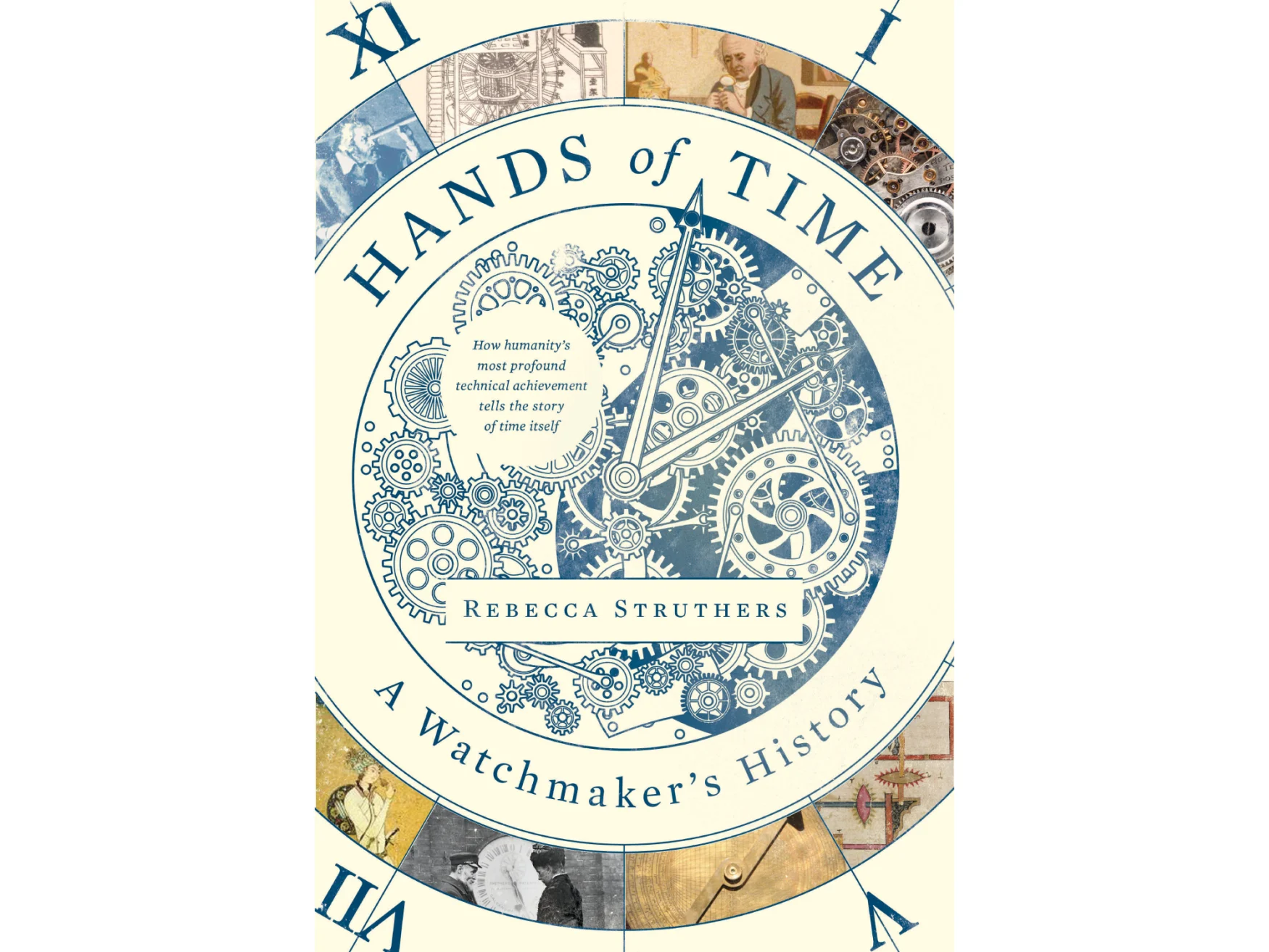Hitting the Books: In England's industrial mills, even the clocks worked against you
America didn’t get around to really addressing child labor until the late ’30s when Roosevelts New Deal took hold and the Public Contracts Act raised the minimum age to 16. Before then, kids could often look forward to spending the majorities of their days doing some of the most dangerous and delicate work required on the factory floor. It’s something today’s kids can look forward to as well.
In Hands of Time: A Watchmaker’s History, venerated watchmaker Rebecca Struthers explores how the practice and technology of timekeeping has shaped and molded the modern world through her examination of history’s most acclaimed timepieces. In the excerpt below, however, we take a look at 18th- and 19th-century Britain where timekeeping was used as a means of social coercion in keeping both adult and child workers pliant and productive.

Excerpted from Hands of Time: A Watchmaker’s History by Rebecca Struthers. Published by Harper. Copyright © 2023 by Rebecca Struthers. All rights reserved.
Although Puritanism had disappeared from the mainstream in Europe by the time of the Industrial Revolution, industrialists, too, preached redemption through hard work — lest the Devil find work for idle hands to do. Now, though, the goal was productivity as much as redemption, although the two were often conveniently conflated. To those used to working by the clock, the provincial workers’ way of time appeared lazy and disorganized and became increasingly associated with unchristian, slovenly ways. Instead ‘time thrift’ was promoted as a virtue, and even as a source of health. In 1757, the Irish statesman Edmund Burke argued that it was ‘excessive rest and relaxation [that] can be fatal producing melancholy, dejection, despair, and often self-murder’ while hard work was ‘necessary to health of body and mind’.

Subscribe to the Engadget Deals Newsletter
Great deals on consumer electronics delivered straight to your inbox, curated by Engadget’s editorial team. See latest

Please enter a valid email address
Please select a newsletter
By subscribing, you are agreeing to Engadget’s Terms and Privacy Policy.
Historian E.P. Thompson, in his famous essay ‘Time, Work-Discipline and Industrial Capitalism’, poetically described the role of the watch in eighteenth-century Britain as ‘the small instrument which now regulated the rhythms of industrial life’. It’s a description that, as a watchmaker, I particularly enjoy, as I’m often ‘regulating’ the watches I work on — adjusting the active hairspring length to get the watch running at the right rate — so they can regulate us in our daily lives. For the managerial classes, however, their watches dictated not just their own lives but also those of their employees.
In 1850 James Myles, a factory worker from Dundee, wrote a detailed account of his life working in a spinning mill. James had lived in the countryside before relocating to Dundee with his mother and siblings after his father was sentenced to seven years’ transportation to the colonies for murder. James was just seven years old when he managed to get a factory job, a great relief to his mother as the family were already starving. He describes stepping into ‘the dust, the din, the work, the hissing and roaring of one person to another’. At a nearby mill the working day ran for seventeen to nineteen hours and mealtimes were almost dispensed with in order to eke the very most out of their workers’ productivity, ‘Women were employed to boil potatoes and carry them in baskets to the different flats; and the children had to swallow a potato hastily … On dinners cooked and eaten as I have described, they had to subsist till half past nine, and frequently ten at night.’ In order to get workers to the factory on time, foremen sent men round to wake them up. Myles describes how ‘balmy sleep had scarcely closed their urchin eyelids, and steeped their infant souls in blessed forgetfulness, when the thumping of the watchmen’s staff on the door would rouse them from repose, and the words “Get up; it’s four o’clock,” reminded them they were factory children, the unprotected victims of monotonous slavery.’
Human alarm clocks, or ‘knocker-uppers’, became a common sight in industrial cities.* If you weren’t in possession of a clock with an alarm (an expensive complication at the time), you could pay your neighborhood knocker-upper a small fee to tap on your bedroom windows with a long stick, or even a pea shooter, at the agreed time. Knocker-uppers tried to concentrate as many clients within a short walking distance as they could, but were also careful not to knock too hard in case they woke up their customer’s neighbors for free. Their services became more in demand as factories increasingly relied on shift work, expecting people to work irregular hours.
Once in the workplace, access to time was often deliberately restricted and could be manipulated by the employer. By removing all visible clocks other than those controlled by the factory, the only person who knew what time the workers had started and how long they’d been going was the factory master. Shaving time off lunch and designated breaks and extending the working day for a few minutes here and there was easily done. As watches started to become more affordable, those who were able to buy them posed an unwelcome challenge to the factory master’s authority.
An account from a mill worker in the mid-nineteenth century describes how: ‘We worked as long as we could see in the summer time, and I could not say what hour it was when we stopped. There was nobody but the master and the master’s son who had a watch, and we did not know the time. There was one man who had a watch … It was taken from him and given into the master’s custody because he had told the men the time of day …’
James Myles tells a similar story: ‘In reality there were no regular hours: masters and managers did with us as they liked. The clocks at factories were often put forward in the morning and back at night, and instead of being instruments for the measurement of time, they were used as cloaks for cheatery and oppression. Though it is known among the hands, all were afraid to speak, and a workman then was afraid to carry a watch, as it was no uncommon event to dismiss anyone who presumed to know too much about the science of Horology.’
Time was a form of social control. Making people start work at the crack of dawn, or even earlier, was seen as an effective way to prevent working-class misbehavior and help them to become productive members of society. As one industrialist explained, ‘The necessity of early rising would reduce the poor to a necessity of going to Bed bedtime; and thereby prevent the Danger of Midnight revels.’ And getting the poor used to temporal control couldn’t start soon enough. Even children’s anarchic sense of the present should be tamed and fitted to schedule. In 1770 English cleric William Temple had advocated that all poor children should be sent from the age of four to workhouses, where they would also receive two hours of schooling a day. He believed that there was:
considerable use in their being, somehow or other, constantly employed for at least twelve hours a day, whether [these four-year-olds] earn their living or not; for by these means, we hope that the rising generation will be so habituated to constant employment that it would at length prove agreeable and entertaining to them …
Because we all know how entertaining most four-year-olds would find ten hours of hard labor followed by another two of schooling. In 1772, in an essay distributed as a pamphlet entitled A View of Real Grievances, an anonymous author added that this training in the ‘habit of industry’ would ensure that, by the time a child was just six or seven, they would be ‘habituated, not to say naturalized to Labour and Fatigue.’ For those readers with young children looking for further tips, the author offered examples of the work most suited to children of ‘their age and strength’, chief being agriculture or service at sea. Appropriate tasks to occupy them include digging, plowing, hedging, chopping wood and carrying heavy things. What could go wrong with giving a six-year-old an ax or sending them off to join the navy?
The watch industry had its own branch of exploitative child labour in the form of what is known as the Christchurch Fusee Chain Gang. When the Napoleonic Wars caused problems with the supply of fusee chains, most of which came from Switzerland, an entrepreneurial clockmaker from the south coast of England, called Robert Harvey Cox, saw an opportunity. Making fusee chains isn’t complicated, but it is exceedingly fiddly. The chains, similar in design to a bicycle chain, are not much thicker than a horse’s hair, and are made up of links that are each stamped by hand and then riveted together. To make a section of chain the length of a fingertip requires seventy-fi ve or more individual links and rivets; a complete fusee chain can be the length of your hand. One book on watchmaking calls it ‘the worst job in the world’. Cox, however, saw it as perfect labor for the little hands of children and, when the Christchurch and Bournemouth Union Workhouse opened in 1764 down the road from him to provide accommodation for the town’s poor, he knew where to go looking. At its peak, Cox’s factory employed around forty to fifty children, some as young as nine, under the pretext of preventing them from being a financial burden. Their wages, sometimes less than a shilling a week (around £3 today), were paid directly to their workhouse. Days were long and, although they appear to have had some kind of magnification to use, the work could cause headaches and permanent damage to their eyesight. Cox’s factory was followed by others, and Christchurch, this otherwise obscure market town on the south coast, would go on to become Britain’s leading manufacturer of fusee chains right up until the outbreak of the First World War in 1914.
The damage industrial working attitudes to time caused to poor working communities was very real. The combination of long hours of hard labor, in often dangerous and heavily polluted environments, with disease and malnutrition caused by abject poverty, was toxic. Life expectancy in some of the most intensive manufacturing areas of Britain was incredibly low. An 1841 census of the Black Country parish of Dudley in the West Midlands found that the average was just sixteen years and seven months.
